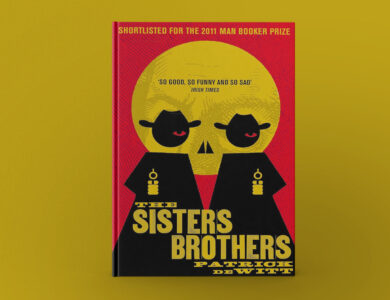The Hobbit by J.R.R. Tolkien
The Hobbit: A Journey Through Middle-earth by J.R.R. Tolkien

“The Hobbit” by J.R.R. Tolkien is a timeless classic that has enchanted readers for generations. This beloved fantasy novel takes us on an epic journey through Middle-earth, filled with adventure, danger, and discovery. In this article, we will explore the various facets of “The Hobbit,” providing an in-depth summary, examining its themes, and discussing its lasting impact and legacy.
Author’s Background
J.R.R. Tolkien, an English writer, poet, and philologist, is renowned for his contributions to the fantasy genre. Born in 1892, Tolkien’s academic career was distinguished, with a focus on languages and literature. His deep love for mythology and ancient languages heavily influenced his writing. “The Hobbit,” published in 1937, was Tolkien’s first major work, setting the stage for his later masterpiece, “The Lord of the Rings.” Tolkien’s ability to create intricate worlds and languages has left an indelible mark on literature, making him one of the most influential authors of the 20th century.
In-Depth Summary
“The Hobbit” follows the journey of Bilbo Baggins, a hobbit who enjoys a quiet and uneventful life in the Shire. His world is turned upside down when Gandalf the wizard and a group of thirteen dwarves, led by Thorin Oakenshield, arrive at his doorstep. They seek Bilbo’s help in reclaiming the Lonely Mountain and its treasure from the dragon Smaug.
Reluctantly, Bilbo joins the company and embarks on an adventure that takes him far from the comforts of home. Along the way, they encounter trolls, goblins, elves, and giant spiders. Bilbo’s cleverness and bravery are tested repeatedly, particularly when he finds a mysterious ring that grants him the power of invisibility.
The journey to the Lonely Mountain is fraught with peril, but Bilbo’s resourcefulness and courage help the group overcome numerous obstacles. Upon reaching the mountain, Bilbo confronts Smaug and manages to steal a valuable cup, awakening the dragon’s wrath. Smaug’s subsequent attack on the nearby Lake-town leads to his demise, thanks to the efforts of Bard the Bowman.
With Smaug defeated, the dwarves reclaim their homeland, but tensions arise over the treasure. The arrival of armies from various factions leads to the Battle of Five Armies. Bilbo plays a crucial role in the conflict, ultimately helping to broker peace. In the end, Bilbo returns to the Shire, forever changed by his experiences.
Themes and Insights
“The Hobbit” explores several enduring themes, including:
- Heroism and Personal Growth: Bilbo’s transformation from a timid hobbit to a courageous hero underscores the theme of personal growth and the potential for greatness within everyone.
- Adventure and Exploration: The novel celebrates the spirit of adventure and the joy of discovering new places and experiences.
- Greed and Its Consequences: The desire for treasure and power leads to conflict and strife, highlighting the dangers of greed.
- Friendship and Loyalty: The bonds formed between Bilbo, the dwarves, and other characters emphasize the importance of friendship and loyalty in overcoming challenges.
Personal Reflections
Reading “The Hobbit” was a magical experience that transported me to a world of wonder and excitement. Tolkien’s rich descriptions and imaginative storytelling made Middle-earth come alive, and I found myself completely immersed in Bilbo’s journey. The novel’s themes of courage and self-discovery resonated deeply, reminding me of the importance of stepping out of my comfort zone and embracing new challenges. Bilbo’s transformation from a reluctant adventurer to a brave hero was both inspiring and heartwarming. “The Hobbit” is a book that I return to time and again, finding new insights and joys with each reading.
Recommendation
“The Hobbit” is a must-read for fans of fantasy literature and anyone who enjoys a well-crafted adventure story. J.R.R. Tolkien’s masterful world-building and engaging narrative make this book a timeless classic that appeals to readers of all ages. Whether you’re a seasoned fantasy enthusiast or new to the genre, “The Hobbit” offers a captivating journey that will leave you longing for more.
Impact and Legacy
Since its publication, “The Hobbit” has had a profound impact on literature and popular culture. The novel’s success paved the way for Tolkien’s later works and helped establish the modern fantasy genre. “The Hobbit” has been adapted into animated films, radio dramas, and a highly successful live-action film trilogy, further cementing its place in the cultural zeitgeist.
The character of Bilbo Baggins has become an iconic figure in literature, representing the everyman who rises to greatness. Tolkien’s creation of Middle-earth has inspired countless writers, artists, and filmmakers, making “The Hobbit” a cornerstone of fantasy literature.
Conclusion
In conclusion, “The Hobbit” by J.R.R. Tolkien is a masterpiece of fantasy literature that continues to enchant and inspire readers. Its exploration of themes such as heroism, adventure, and friendship, combined with its richly developed world and memorable characters, make it a standout work in the genre. Whether you’re revisiting the book or discovering it for the first time, “The Hobbit” is a journey worth taking.




